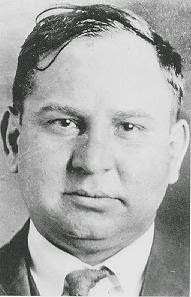The Worst Card in the Deck
 |
Masseria murder scene; note the ace
of apades -- fate or fiction?
|
 |
| Joe "The Boss" mugshot. |
Also our good friend/mentor Sonny Girard in his comment below has reminded us that Lucky Luciano used all-Jewish shooters for the Masseria hit, most likely because Joe The Boss, who had a knack for escaping assassination attempts, would be unlikely to recognize Jewish gunmen. Anyway, this was an iconic mob hit, just like Anastasia in the barber chair some 25 years later, and Crazy Joe Gallo a decade or two later on, also in a restaurant, and Paul Castellano -- but that is material for another post.
Sonny -- we have a standing offer, anything you write we'd publish. If people would start helping to support our site we could even pay you.
Sonny is a retired mobster who more than earned his stripes and is taking life easy in Florida; he did his time and know is dedicated to writing, mostly correcting the voluminous amount of falsehoods that have crept into Mafia history over the many decades it's been around. He's written some great fiction, too, which you should also check out. (I have read and re-read all his works and recommend them all highly. Find them at his site: Sonny's Mob Social Club. He's the real deal; the life we try to write about, he actually lived.)
Sonny, la tua scrittura è sempre apprezzato e rispettato. Cosa Nostra News è sempre un amico ... Grazie, Ed
Q. I’d like some information about the killing of Joe Masseria, the mob leader also known as the Boss, in 1931. All I’ve heard is that the shooting took place in Scarpato’s Coney Island Restaurant and that Lucky Luciano was supposed to have been there.
A. On April 15, 1931, Giuseppe Masseria’s afternoon luncheon meeting was interrupted by four bullets in his back and one in his head. He had been dining at Nuova Villa Tammaro, a seafood restaurant at 2715 West 15th Street in Coney Island, Brooklyn. It was run by Gerardo Scarpato and named for the owner’s mother-in-law, Anna Tammaro. On his way to lunch, Mr. Masseria had parked his steel-armored sedan, with plate glass an inch thick, at a garage nearby.
The police found Mrs. Tammaro bending over the gang leader’s body. Mr. Masseria lay on his back. Playing cards were strewed around the room. A photographer snapped an image of the dead mobster with the ace of spades clutched in his right hand; that card, however, might have been staged. Mr. Scarpato said he had been out for a walk at the time.
The assailants left their coats, which were never successfully traced. No one was arrested.
Mr. Masseria had been widely regarded as the top Mafia leader in New York for about 10 years — “Bigger than Al Capone,” one anonymous detective was quoted as saying by The New York Times — and his shooting ended a rivalry with Salvatore Maranzano and a yearlong round-robin of bloodletting known as the Castellammarese War. It also paved the way for the rise of the notorious five mob families, with Lucky Luciano replacing Mr. Masseria as a family head.
That August, Mr. Maranzano celebrated with a three-day banquet at the same restaurant, according to “Lucky Luciano: The Real and the Fake Gangster,” by Tim Newark (Thomas Dunne, 2010). A month later, he was killed, and Mr. Luciano emerged as the most powerful mob boss in New York.
There are different versions of what happened in the restaurant. Many accounts say that Mr. Luciano arranged the meeting in order to set up Mr. Masseria, and that even if he wasn’t one of the gunmen, he was at the scene, conveniently excusing himself to use the bathroom. Vito Genovese, Bugsy Siegel, Albert Anastasia and Joe Adonis have been mentioned as trigger men. The mob informer Joseph Valachi named Mr. Luciano, Mr. Genovese, Frank Livorsi and Joe Stracci.
Fearing reprisals, Mr. Scarpato, the restaurateur, asked the police to take his fingerprints so that his body could be identified if he were killed. Good move. He was killed on Sept. 10, 1932, exactly one year after Mr. Maranzano. A modern warehouse for a smoked-fish company was built on the site of his restaurant.